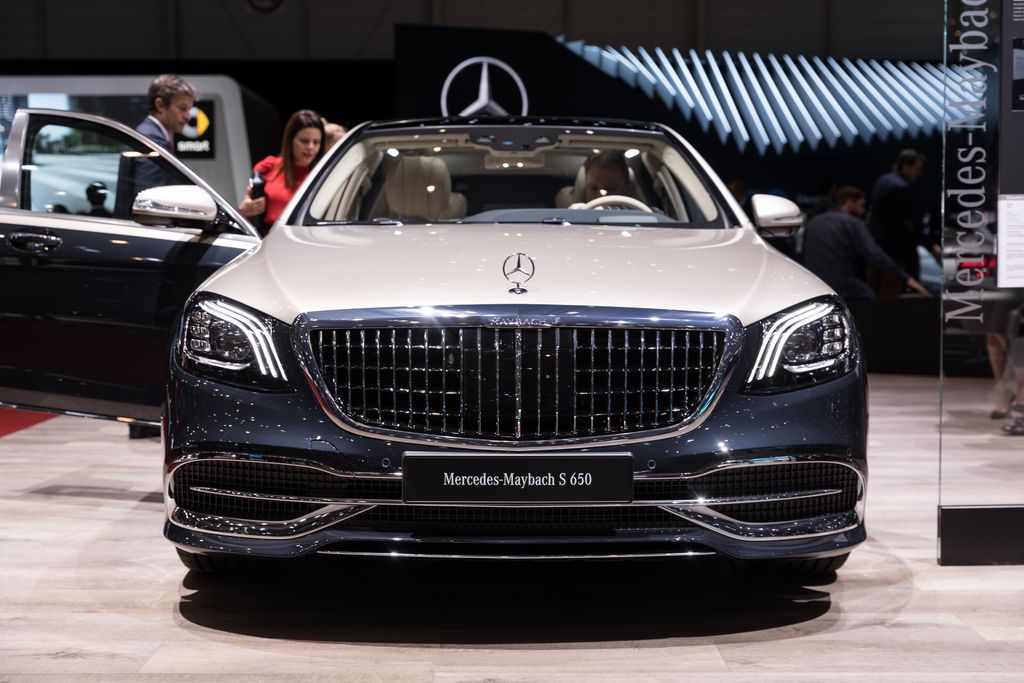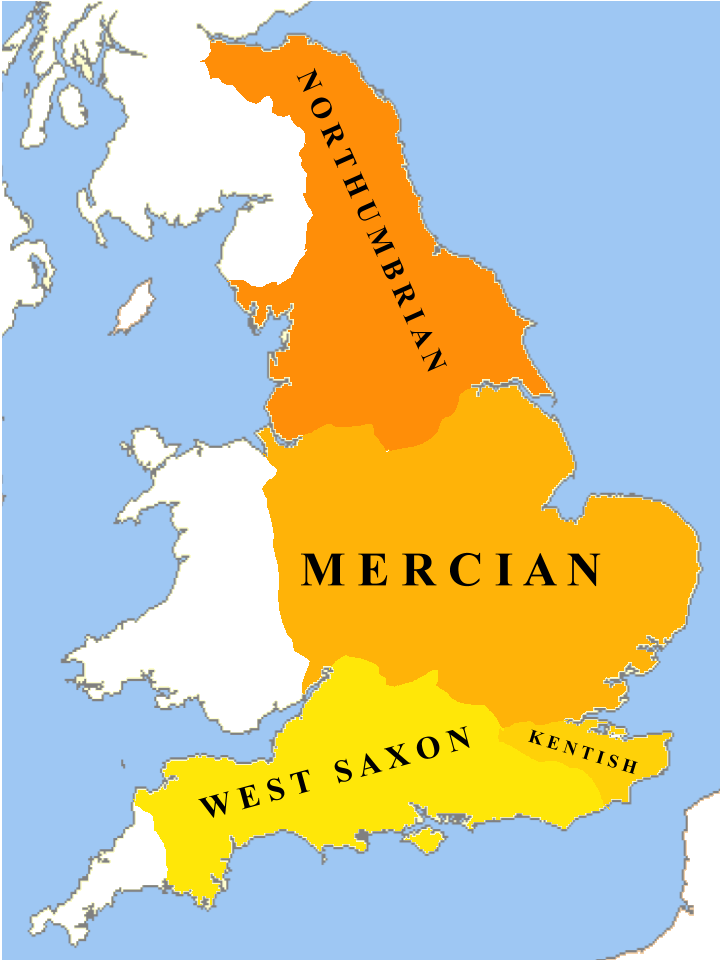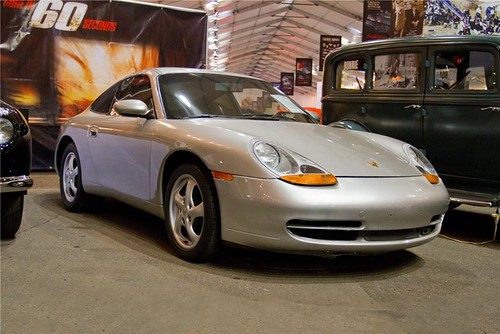
For countless automotive enthusiasts, the Porsche 911 isn’t just a car; it’s an enduring icon, a symbol of unparalleled driving dynamics, timeless design, and engineering prowess. From its unmistakable silhouette to the thrilling howl of its flat-six engine, the 911 has captivated hearts and minds for decades, earning its place as one of the most influential sports cars of the 20th century. Its reputation for both fun and reliability, a ‘dynamic duo’ of qualities, has made it a dream acquisition for many.
Yet, the allure of owning such a legend often comes with a financial reality that extends far beyond the initial purchase price. While a brand-new 911 represents a superb value proposition, the costs of owning one, both upfront and over time, are far from insignificant. As one YouTube creator, Nobby on Cars, discovered firsthand, even a seemingly minor issue can quickly unravel into a substantial and unexpected expense, revealing a host of ‘sneaky hidden costs’ that new and seasoned owners alike might not fully anticipate.
This in-depth exploration aims to shed light on these often-unseen financial aspects of Porsche 911 ownership, drawing on expert analysis, real-world experiences, and detailed market data. We’ll break down everything from unforeseen repair bills and recurring maintenance schedules to the broader economic factors like depreciation, financing, and insurance. Our goal is to equip prospective and current owners with the authoritative, detailed, and practical insights needed to truly understand the commitment involved in keeping a piece of automotive history ticking over.

1. **The Initial Shock: Unexpected Repair Bills (Nobby’s Experience)**One of the most immediate and impactful hidden costs can strike an owner right after acquiring their dream machine, as illustrated vividly by the experience of YouTube creator Nobby on Cars. After finally parking his classic Porsche 911 on his driveway, a seemingly innocuous oil leak caught his eye. Being a responsible owner, he decided to get it checked by specialists, only to uncover a cascade of underlying issues that he was simply not prepared for.
What began as a simple leak quickly escalated. Not only did the car have a tandem oil pump issue, which alone cost over $600, but the specialists unearthed a variety of other pressing problems. The brake lines, for instance, were found to be ‘knackered’ amongst other issues that needed immediate attention. This scenario perfectly encapsulates the unpredictable nature of classic car ownership, where one small fault can be a harbinger of more significant, hidden troubles beneath the surface.
All told, these necessary repairs and the various elements required to access and address them added up to an eye-watering total of €9,193, or approximately $10,714. While the specialists did offer a pragmatic staged plan, advising that some issues could wait a year, the tandem oil leak was identified as the ‘biggest issue that you need to get sorted now.’ This pragmatic approach meant an immediate outlay of around €4,000 ($4,662) to ensure the car remained safe and solid, with another €5,000 ($5,827) earmarked for future repairs.
Nobby’s experience serves as a powerful cautionary tale for anyone contemplating the purchase of a classic vehicle, particularly a high-performance one like a Porsche 911. As he wisely noted, ‘It’s a good message for everybody, if you’re buying something classic, you just can’t do enough checks to have a look.’ The message is clear: thorough due diligence and a preparedness for immediate, substantial investment in repairs are paramount, even for what might appear to be a diamond in the rough.
Car Model Information: 2025 Porsche 911 Carrera
Name: Porsche 911
Caption: The 1 millionth 911 produced on display at Volkswagen Group Forum, Berlin
Designer: Ferdinand Alexander Porsche
Manufacturer: Porsche
Production: September 1964 – present
Assembly: Stuttgart,Baden-Württemberg
Class: Sports car
BodyStyle: unbulleted list
Related: unbulleted list
Layout: Rear-engine design,rear-wheel drive
Predecessor: Porsche 356
Categories: 1970s cars, 1980s cars, 1990s cars, 2+2 coupés, 2000s cars
Summary: The Porsche 911 model series (pronounced Nine Eleven or in German: Neunhundertelf, or colloquially Neunelfer) is a family of two-door, high performance rear-engine sports cars, introduced in September 1964 by Porsche of Stuttgart, Germany, and now in its eighth generation. All 911s have a rear-mounted flat-six engine, and usually 2+2 seating, except for special 2-seater variants. Originally, 911s had air-cooled engines, and torsion bar suspension, but the 911 has been continuously enhanced, and evolved across generations. Though the 911 core concept has remained largely unchanged, water-cooled engines were introduced with the 996 series in 1998, and front and rear suspension have been replaced by Porsche-specific MacPherson suspension up front, and independent multi-link rear suspension.
The 911 has been raced extensively by private and factory teams, in a variety of classes. It is among the most successful competition cars. In the mid-1970s, the naturally aspirated 911 Carrera RSR won world championship races including Targa Florio and the 24 Hours of Daytona. The 911-derived 935 turbo also won the 24 Hours of Le Mans in 1979. Porsche won the World Championship for Makes in 1976, 1977, 1978, and 1979 with 911-derived models.
In a 1999 poll to determine the Car of the Century, the 911 ranked fifth — one of two in the top five that had remained continuously in production (the original Beetle remained in production until 2003). The one millionth example was manufactured in May 2017 and is in the company’s permanent collection.
Get more information about: Porsche 911
Buying a high-performing used car >>>
Brand: Porsche Model: 911
Price: $158,691 Mileage: 5,931 mi.
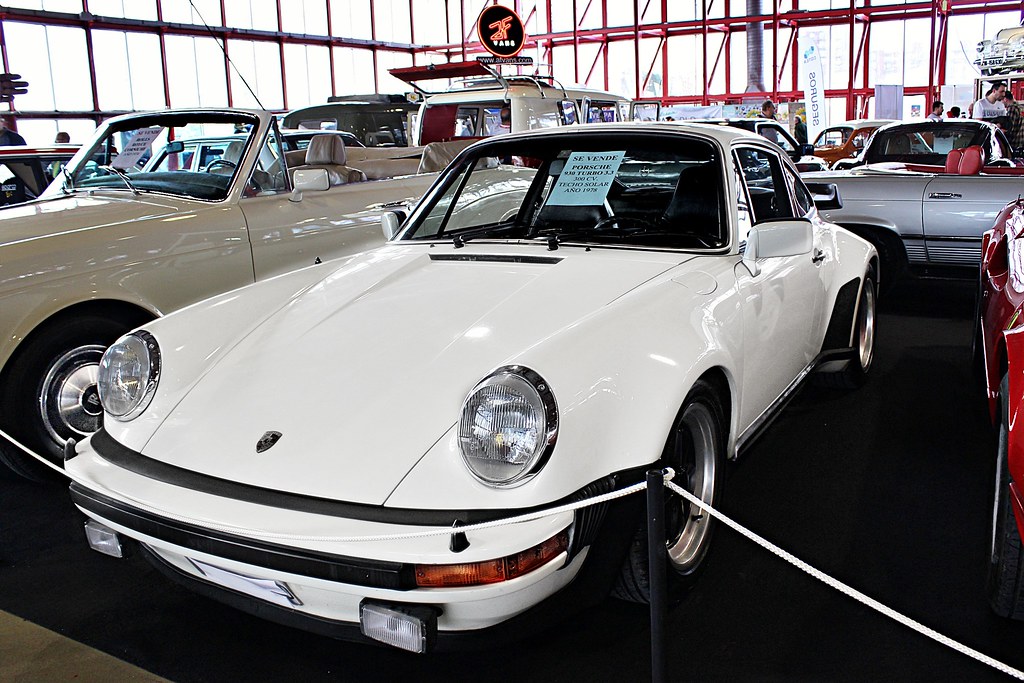
2. **The Labor Burden: Why Expertise Comes at a Price**The most significant contributor to the eye-watering bills associated with classic Porsche 911 repairs often comes down to one crucial factor: labor. As Nobby, the 911 owner, candidly observed, ‘Labour’s my worst enemy here.’ This sentiment resonates deeply within the enthusiast community, reflecting the reality that specialized expertise for these complex machines commands a premium.
Working on a Porsche 911, especially a classic model, requires a level of knowledge and precision that is far beyond what a general mechanic might possess. These are not ordinary vehicles; they feature unique engineering, specific tolerances, and often require bespoke tools and diagnostic equipment. Identifying and correctly resolving issues, particularly with older components, demands years of dedicated experience with the marque.
Consequently, the hourly rates charged by Porsche specialists, or even highly skilled independent mechanics with a proven track record working on these cars, are significantly higher than those for more mainstream vehicles. This premium is justifiable, given the intricate nature of the work and the assurance that your prized possession is in capable hands. However, it invariably inflates the overall cost of any repair or service, turning even a seemingly straightforward fix into a substantial financial commitment.
Beyond just the hourly rate, the sheer amount of time required for certain procedures can also compound the labor cost. Accessing components in a tightly packaged sports car, particularly a rear-engined one like the 911, can be more labor-intensive than in other vehicles. This blend of specialized skill and the time needed to apply it effectively means that labor truly does become a significant, and often underestimated, element of Porsche 911 ownership expenses.
Car Model Information: 2025 Porsche 911 Carrera
Name: Porsche 911
Caption: The 1 millionth 911 produced on display at Volkswagen Group Forum, Berlin
Designer: Ferdinand Alexander Porsche
Manufacturer: Porsche
Production: September 1964 – present
Assembly: Stuttgart,Baden-Württemberg
Class: Sports car
BodyStyle: unbulleted list
Related: unbulleted list
Layout: Rear-engine design,rear-wheel drive
Predecessor: Porsche 356
Categories: 1970s cars, 1980s cars, 1990s cars, 2+2 coupés, 2000s cars
Summary: The Porsche 911 model series (pronounced Nine Eleven or in German: Neunhundertelf, or colloquially Neunelfer) is a family of two-door, high performance rear-engine sports cars, introduced in September 1964 by Porsche of Stuttgart, Germany, and now in its eighth generation. All 911s have a rear-mounted flat-six engine, and usually 2+2 seating, except for special 2-seater variants. Originally, 911s had air-cooled engines, and torsion bar suspension, but the 911 has been continuously enhanced, and evolved across generations. Though the 911 core concept has remained largely unchanged, water-cooled engines were introduced with the 996 series in 1998, and front and rear suspension have been replaced by Porsche-specific MacPherson suspension up front, and independent multi-link rear suspension.
The 911 has been raced extensively by private and factory teams, in a variety of classes. It is among the most successful competition cars. In the mid-1970s, the naturally aspirated 911 Carrera RSR won world championship races including Targa Florio and the 24 Hours of Daytona. The 911-derived 935 turbo also won the 24 Hours of Le Mans in 1979. Porsche won the World Championship for Makes in 1976, 1977, 1978, and 1979 with 911-derived models.
In a 1999 poll to determine the Car of the Century, the 911 ranked fifth — one of two in the top five that had remained continuously in production (the original Beetle remained in production until 2003). The one millionth example was manufactured in May 2017 and is in the company’s permanent collection.
Get more information about: Porsche 911
Buying a high-performing used car >>>
Brand: Porsche Model: 911
Price: $158,691 Mileage: 5,931 mi.
Read more about: Financial Disaster in Every Mile: 9 Trucks Owners Vow They’d Unbuy Given the Chance
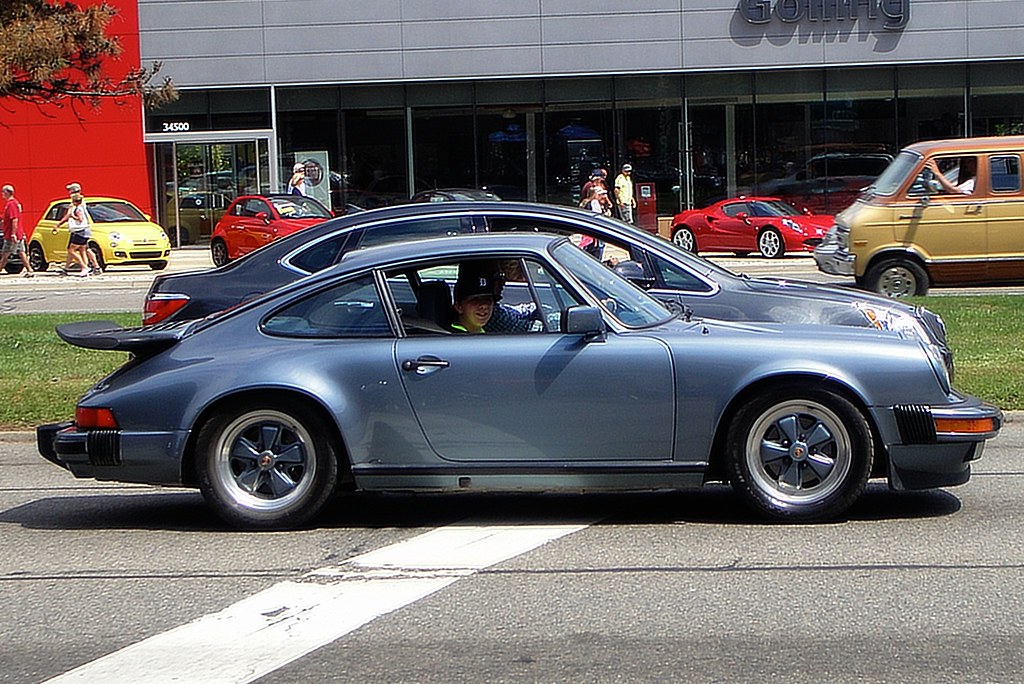
3. **Depreciation Nuances: Holding Value vs. Average Losses**While the concept of depreciation might seem more relevant to brand-new vehicles, understanding how Porsche 911s typically depreciate provides crucial context for classic ownership, especially if you’re considering a newer classic that hasn’t fully appreciated. The 911, particularly certain variants, exhibits a unique depreciation profile compared to the average car, offering a strong resale value over time.
Market data from popular car shopping sites like Edmunds and CarEdge offers benchmarks on what new Porsche 911 ownership costs, including depreciation, might look like over a five-year period. However, these figures come with significant nuances. For example, Edmunds estimates a whopping $106,286 in depreciation over five years for a 2022 Porsche 911 GT3 coupe, with a substantial $63,189 of that occurring in the first year alone.
This figure, while startling, is likely based on algorithms that may not fully differentiate between the diverse 911 lineup. CarEdge, taking a more granular approach, determined that an average Porsche 911 would depreciate by $31,583 after five years. This figure aligns more closely with ‘real world’ or anecdotal scenarios, offering a more accurate representation of the typical ownership experience for widely available models.
The discrepancy highlights a critical point: the market for 911s is not monolithic. Extremely low-volume and exclusive models, such as the GT3 and GT3 RS, often command prices near their original MSRP, even after several years. Existing trends confirm this exceptional value retention. In contrast, more widely available models like the Carrera S are more susceptible to depreciation, thus influencing the overall average.
Despite these variations, the overall picture for the Porsche 911 is overwhelmingly positive regarding value retention. Considering that new 911 models typically start in excess of $115,000 before options, the depreciation costs as a percentage are notably low when compared to the broader automotive industry average. This exceptional performance has earned the Porsche 911 an A+ Value Rating from CarEdge, providing prospective owners with confidence that their investment will largely retain its value over time, a comforting thought for those eyeing long-term ownership or future resale.
Car Model Information: 2025 Porsche 911 Carrera
Name: Porsche 911
Caption: The 1 millionth 911 produced on display at Volkswagen Group Forum, Berlin
Designer: Ferdinand Alexander Porsche
Manufacturer: Porsche
Production: September 1964 – present
Assembly: Stuttgart,Baden-Württemberg
Class: Sports car
BodyStyle: unbulleted list
Related: unbulleted list
Layout: Rear-engine design,rear-wheel drive
Predecessor: Porsche 356
Categories: 1970s cars, 1980s cars, 1990s cars, 2+2 coupés, 2000s cars
Summary: The Porsche 911 model series (pronounced Nine Eleven or in German: Neunhundertelf, or colloquially Neunelfer) is a family of two-door, high performance rear-engine sports cars, introduced in September 1964 by Porsche of Stuttgart, Germany, and now in its eighth generation. All 911s have a rear-mounted flat-six engine, and usually 2+2 seating, except for special 2-seater variants. Originally, 911s had air-cooled engines, and torsion bar suspension, but the 911 has been continuously enhanced, and evolved across generations. Though the 911 core concept has remained largely unchanged, water-cooled engines were introduced with the 996 series in 1998, and front and rear suspension have been replaced by Porsche-specific MacPherson suspension up front, and independent multi-link rear suspension.
The 911 has been raced extensively by private and factory teams, in a variety of classes. It is among the most successful competition cars. In the mid-1970s, the naturally aspirated 911 Carrera RSR won world championship races including Targa Florio and the 24 Hours of Daytona. The 911-derived 935 turbo also won the 24 Hours of Le Mans in 1979. Porsche won the World Championship for Makes in 1976, 1977, 1978, and 1979 with 911-derived models.
In a 1999 poll to determine the Car of the Century, the 911 ranked fifth — one of two in the top five that had remained continuously in production (the original Beetle remained in production until 2003). The one millionth example was manufactured in May 2017 and is in the company’s permanent collection.
Get more information about: Porsche 911
Buying a high-performing used car >>>
Brand: Porsche Model: 911
Price: $158,691 Mileage: 5,931 mi.
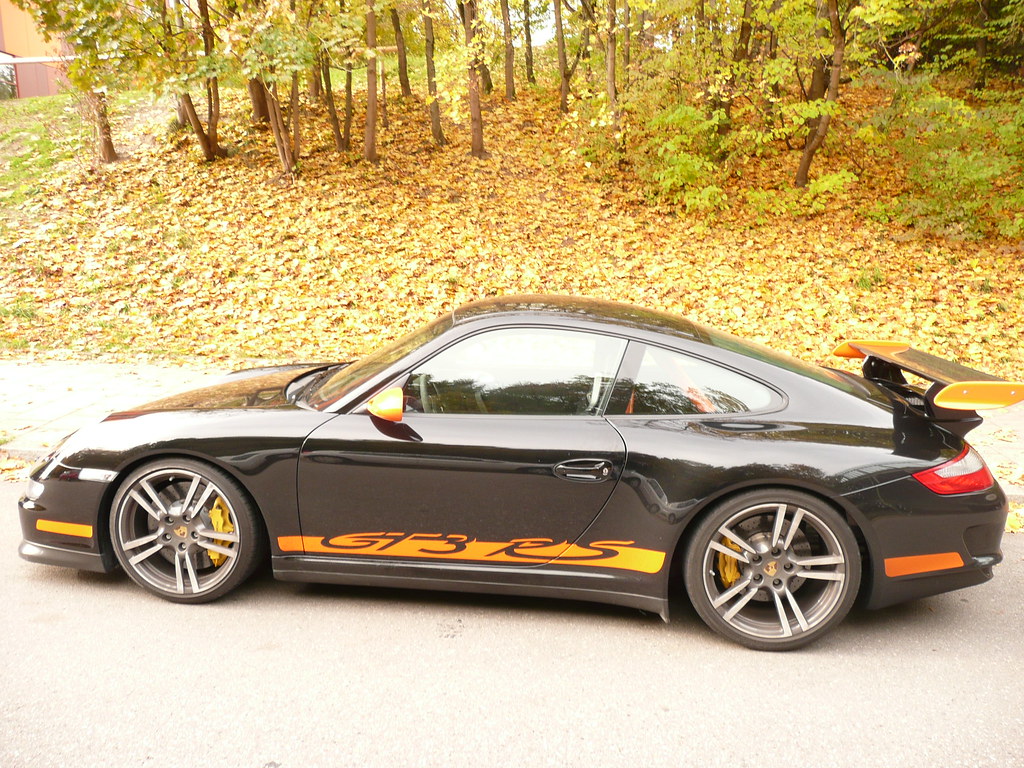
4. **Financing a Dream: The Real Cost of Borrowing**For many aspiring Porsche 911 owners, financing is the pathway to acquiring their dream vehicle, whether new or a more recent classic. While it allows immediate access to the car, it introduces a significant financial layer to the overall cost of ownership. The interest paid on a loan can accumulate substantially over the repayment period, making it a critical hidden cost to consider.
Several factors heavily influence the total financing costs. Chief among these are the prevailing interest rates, which can fluctuate based on market conditions and the borrower’s creditworthiness. A strong credit score is invaluable here, as it can unlock lower APRs and broader financing options. Additionally, making a substantial down payment can significantly reduce the principal amount borrowed, thereby lowering the total interest accrued over the life of the loan.
Analyses from CarEdge and Edmunds provide differing perspectives on typical interest costs for a Porsche 911 over five years. CarEdge estimates interest costs at $24,655, based on assumptions of a 72-month loan with a 4.75% APR and a 20% down payment. Edmunds, focusing on a 2022 Porsche 911 GT3 coupe, projects a higher figure of $45,545, which by reverse engineering, suggests a 72-month loan with an approximately 6.00% APR and a 0% down payment.
These discrepancies underscore the highly individualized nature of financing costs. The exact schedule of your loan payments and total interest will depend entirely on the loan amount, interest rate, and term you secure. Therefore, it is imperative to engage in detailed discussions with your bank or dealership finance manager before finalizing any purchase. Alternatively, various online loan calculators can provide helpful estimates if you prefer to crunch the numbers independently.
Car Model Information: 2025 Porsche 911 Carrera
Name: Porsche 911
Caption: The 1 millionth 911 produced on display at Volkswagen Group Forum, Berlin
Designer: Ferdinand Alexander Porsche
Manufacturer: Porsche
Production: September 1964 – present
Assembly: Stuttgart,Baden-Württemberg
Class: Sports car
BodyStyle: unbulleted list
Related: unbulleted list
Layout: Rear-engine design,rear-wheel drive
Predecessor: Porsche 356
Categories: 1970s cars, 1980s cars, 1990s cars, 2+2 coupés, 2000s cars
Summary: The Porsche 911 model series (pronounced Nine Eleven or in German: Neunhundertelf, or colloquially Neunelfer) is a family of two-door, high performance rear-engine sports cars, introduced in September 1964 by Porsche of Stuttgart, Germany, and now in its eighth generation. All 911s have a rear-mounted flat-six engine, and usually 2+2 seating, except for special 2-seater variants. Originally, 911s had air-cooled engines, and torsion bar suspension, but the 911 has been continuously enhanced, and evolved across generations. Though the 911 core concept has remained largely unchanged, water-cooled engines were introduced with the 996 series in 1998, and front and rear suspension have been replaced by Porsche-specific MacPherson suspension up front, and independent multi-link rear suspension.
The 911 has been raced extensively by private and factory teams, in a variety of classes. It is among the most successful competition cars. In the mid-1970s, the naturally aspirated 911 Carrera RSR won world championship races including Targa Florio and the 24 Hours of Daytona. The 911-derived 935 turbo also won the 24 Hours of Le Mans in 1979. Porsche won the World Championship for Makes in 1976, 1977, 1978, and 1979 with 911-derived models.
In a 1999 poll to determine the Car of the Century, the 911 ranked fifth — one of two in the top five that had remained continuously in production (the original Beetle remained in production until 2003). The one millionth example was manufactured in May 2017 and is in the company’s permanent collection.
Get more information about: Porsche 911
Buying a high-performing used car >>>
Brand: Porsche Model: 911
Price: $158,691 Mileage: 5,931 mi.
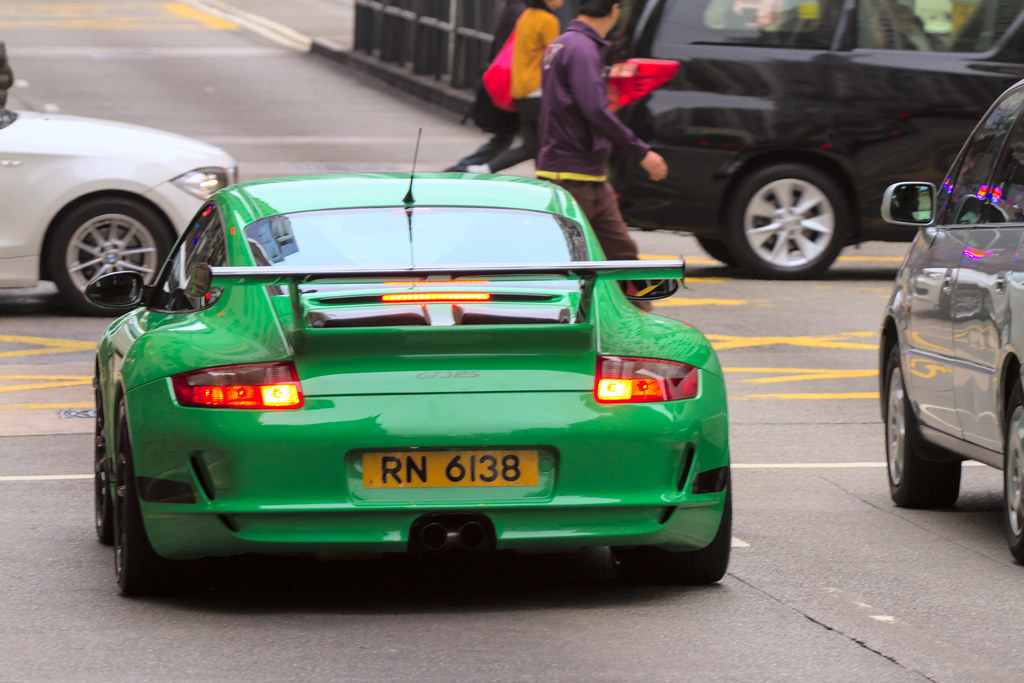
5. **Insurance Premiums: Protecting Your Investment**Securing adequate insurance for a Porsche 911 is not merely a legal requirement; it’s a vital component of protecting a substantial investment, yet its cost can vary wildly and often surprise new owners. Insurance premiums are influenced by a complex interplay of factors, making it challenging to pinpoint an exact figure without specific personal details.
These factors include the owner’s age, driving record, geographical location (across state lines and borders), chosen deductibles, annual usage allowances, and any applicable policy discounts. For a high-performance vehicle like a Porsche 911, the perceived risk by insurers, coupled with the high cost of potential repairs or replacement, inherently drives premiums higher than for mainstream vehicles.
The wide range in reported insurance costs clearly illustrates this variability. Edmunds and CarEdge, for instance, report vastly different estimates over a five-year ownership period for a Porsche 911: $9,518 and $24,180 respectively. This significant discrepancy highlights how individual circumstances and the specific parameters used in each analysis can lead to dramatically different projected costs, reinforcing the need for personalized quotes.
Given these variables, providing an accurate, universal benchmark for 911 insurance costs is genuinely difficult. However, it is paramount for prospective owners to thoroughly familiarize themselves with how car insurance operates in their specific jurisdiction and, crucially, precisely what their chosen policy covers. The Porsche 911 is undoubtedly not the type of car where you want to encounter unwelcome surprises when facing any repair bills, making comprehensive coverage a prudent choice for most owners, typically costing around $1,300 per year, or $6,500 over a five-year period excluding claimed damages or other valuations.
Car Model Information: 2025 Porsche 911 Carrera
Name: Porsche 911
Caption: The 1 millionth 911 produced on display at Volkswagen Group Forum, Berlin
Designer: Ferdinand Alexander Porsche
Manufacturer: Porsche
Production: September 1964 – present
Assembly: Stuttgart,Baden-Württemberg
Class: Sports car
BodyStyle: unbulleted list
Related: unbulleted list
Layout: Rear-engine design,rear-wheel drive
Predecessor: Porsche 356
Categories: 1970s cars, 1980s cars, 1990s cars, 2+2 coupés, 2000s cars
Summary: The Porsche 911 model series (pronounced Nine Eleven or in German: Neunhundertelf, or colloquially Neunelfer) is a family of two-door, high performance rear-engine sports cars, introduced in September 1964 by Porsche of Stuttgart, Germany, and now in its eighth generation. All 911s have a rear-mounted flat-six engine, and usually 2+2 seating, except for special 2-seater variants. Originally, 911s had air-cooled engines, and torsion bar suspension, but the 911 has been continuously enhanced, and evolved across generations. Though the 911 core concept has remained largely unchanged, water-cooled engines were introduced with the 996 series in 1998, and front and rear suspension have been replaced by Porsche-specific MacPherson suspension up front, and independent multi-link rear suspension.
The 911 has been raced extensively by private and factory teams, in a variety of classes. It is among the most successful competition cars. In the mid-1970s, the naturally aspirated 911 Carrera RSR won world championship races including Targa Florio and the 24 Hours of Daytona. The 911-derived 935 turbo also won the 24 Hours of Le Mans in 1979. Porsche won the World Championship for Makes in 1976, 1977, 1978, and 1979 with 911-derived models.
In a 1999 poll to determine the Car of the Century, the 911 ranked fifth — one of two in the top five that had remained continuously in production (the original Beetle remained in production until 2003). The one millionth example was manufactured in May 2017 and is in the company’s permanent collection.
Get more information about: Porsche 911
Buying a high-performing used car >>>
Brand: Porsche Model: 911
Price: $158,691 Mileage: 5,931 mi.
Read more about: Slash Your Premiums: 12 Smart Devices That Could Cut Your Car Insurance by Up To 30%

6. **Scheduled Maintenance: The First Four Years**Even with Porsche’s well-earned reputation for reliability, regular scheduled maintenance is a non-negotiable aspect of ownership, ensuring longevity and preserving performance. Every brand-new Porsche 911 comes with a four-year or 50,000-mile warranty, offering a degree of peace of mind, supplemented by a two-year warranty on original replacement parts or accessories. For maintenance cost estimation, the entry-level Porsche 992 Carrera serves as a solid baseline, as most 911 variants feature very similar maintenance intervals.
The first year typically involves nothing major beyond an essential oil change, which includes replacing the filters. This crucial service is recommended every 10,000 miles or annually, whichever milestone is reached first. Having this procedure done at a Porsche dealership can cost between $450 and $625. Over the course of four years, if this annual service is performed four times, the total can range from $1,600 to $2,500.
Year two of ownership introduces a few more items into the maintenance schedule. Alongside the standard oil and filter change, owners will need to replace the pollen filter and flush the brake fluid, procedures Porsche recommends every two years. These combined services would typically set an owner back around $1,450. Furthermore, if the car has reached the 20,000-mile mark, Porsche also suggests changing the brake pads and rotors, an expense of roughly $2,000, and potentially the tires, costing about $2,100, assuming sufficient wear is present. This brings the potential total for the second year to a substantial $5,500.
As the 911 progresses into its third year, maintenance needs might revert to primarily an oil change, depending on mileage. However, if the vehicle has accumulated 30,000 miles, Porsche recommends changing the spark plugs. This service, coupled with a multi-point inspection, will typically cost around $2,195. Adhering to these recommendations is vital, as failure to stick to the recommended maintenance schedule could, very likely, render the car’s warranty void.
Year four marks the timing for the first major service interval. This comprehensive service includes replacing belts, pulleys, and various filters (including the pollen filter if not previously changed), alongside the standard oil change. It also incorporates a brake-fluid flush and a thorough multi-point inspection, amounting to approximately $2,875. Should the brake pads, rotors, and tires require replacement at this point due to wear, the total service for the fourth year could climb to $6,975, varying based on tire choice. If the 50,000-mile warranty limit is reached before the fourth year ends, only an oil change, at about $625, is strictly necessary under warranty.
Car Model Information: 2025 Porsche 911 Carrera
Name: Porsche 911
Caption: The 1 millionth 911 produced on display at Volkswagen Group Forum, Berlin
Designer: Ferdinand Alexander Porsche
Manufacturer: Porsche
Production: September 1964 – present
Assembly: Stuttgart,Baden-Württemberg
Class: Sports car
BodyStyle: unbulleted list
Related: unbulleted list
Layout: Rear-engine design,rear-wheel drive
Predecessor: Porsche 356
Categories: 1970s cars, 1980s cars, 1990s cars, 2+2 coupés, 2000s cars
Summary: The Porsche 911 model series (pronounced Nine Eleven or in German: Neunhundertelf, or colloquially Neunelfer) is a family of two-door, high performance rear-engine sports cars, introduced in September 1964 by Porsche of Stuttgart, Germany, and now in its eighth generation. All 911s have a rear-mounted flat-six engine, and usually 2+2 seating, except for special 2-seater variants. Originally, 911s had air-cooled engines, and torsion bar suspension, but the 911 has been continuously enhanced, and evolved across generations. Though the 911 core concept has remained largely unchanged, water-cooled engines were introduced with the 996 series in 1998, and front and rear suspension have been replaced by Porsche-specific MacPherson suspension up front, and independent multi-link rear suspension.
The 911 has been raced extensively by private and factory teams, in a variety of classes. It is among the most successful competition cars. In the mid-1970s, the naturally aspirated 911 Carrera RSR won world championship races including Targa Florio and the 24 Hours of Daytona. The 911-derived 935 turbo also won the 24 Hours of Le Mans in 1979. Porsche won the World Championship for Makes in 1976, 1977, 1978, and 1979 with 911-derived models.
In a 1999 poll to determine the Car of the Century, the 911 ranked fifth — one of two in the top five that had remained continuously in production (the original Beetle remained in production until 2003). The one millionth example was manufactured in May 2017 and is in the company’s permanent collection.
Get more information about: Porsche 911
Buying a high-performing used car >>>
Brand: Porsche Model: 911
Price: $158,691 Mileage: 5,931 mi.
Read more about: Hyundai-Kia Crisis: Towing Hitch Fire Risk Threatens Telluride and Palisade SUVs
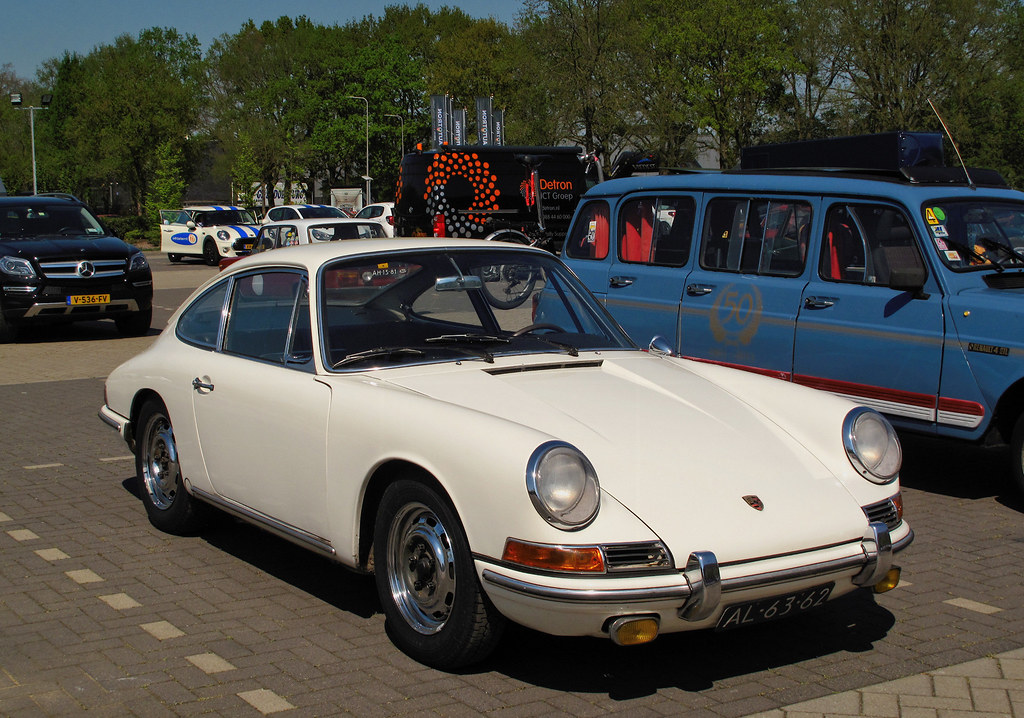
7. **Beyond Warranty: The 60,000-Mile Milestones**Reaching the 60,000-mile mark is a particularly significant milestone for Porsche 911 owners, as it typically signifies the point where the original factory warranty has expired. This transition necessitates an even greater awareness of impending maintenance and potential repair costs, as the owner now fully bears the financial responsibility for all necessary work, underscoring the importance of preventative care and budgeting.
At this critical juncture, several important maintenance procedures typically come due. One notable item is the drive-belt replacement, a component essential for the proper functioning of various engine accessories. This service will generally cost around $750 on average. Proactive replacement of the drive belt can help prevent more serious issues down the line, highlighting the value of adhering to recommended intervals once the car is out of warranty.
For 911s equipped with Porsche’s highly acclaimed PDK (Porsche Doppelkupplung) transmission, a significant service arises at 60,000 miles or six years, whichever comes first: the transmission fluid change. This specialized service, crucial for maintaining the performance and longevity of the sophisticated dual-clutch gearbox, will typically run an owner approximately $1,995. This is a substantial expense, but one that is absolutely vital for such a complex and integral component.
Owners of 911s featuring a manual transmission will find this particular interval to be far less frequent and less costly. The manual transmission fluid change is recommended at 120,000 miles or 12 years, and the service costs less, usually around $1,195. This difference highlights how transmission choice can impact long-term maintenance expenses. Furthermore, differential servicing, a less frequently discussed but still important aspect, involves a fluid change recommended every 10 years, costing $342 ($202 in parts and $140 in labor), with that figure doubling for all-wheel-drive 911 variants.
These 60,000-mile and post-warranty services represent a critical phase in Porsche 911 ownership. Without the safety net of the factory warranty, owners must be prepared for these larger, more specialized maintenance items. While the Porsche 992 has proven to be a reliable platform, even modified examples can still demand extra care, particularly depending on driving habits, making diligent adherence to these post-warranty service recommendations more important than ever.
Even as we navigate the initial stages of Porsche 911 ownership, it becomes clear that the financial commitment extends far beyond the dealership doors. Moving past the predictable repair schedules and the expiration of factory warranties, a truly comprehensive understanding of classic 911 ownership demands a deeper dive into the less obvious, yet equally significant, long-term expenditures and strategic considerations. These are the elements that solidify the 911 as not just a car, but a lifestyle choice requiring careful planning and a realistic budget.
From the everyday necessity of fuel to the deeply personal journey of customization, and the unavoidable reality of government taxes, these factors collectively shape the true cost of keeping an icon on the road. Moreover, for those contemplating entry into this exclusive club, expert advice on navigating the diverse generations and making an informed purchasing decision is invaluable. This section aims to unravel these layers, offering the seasoned insights necessary to truly embrace the enduring legacy of the Porsche 911.
Read more about: The 14 Durable Pickups That Can Easily Blow Past 300,000 Miles with Ease: A Consumer’s Guide
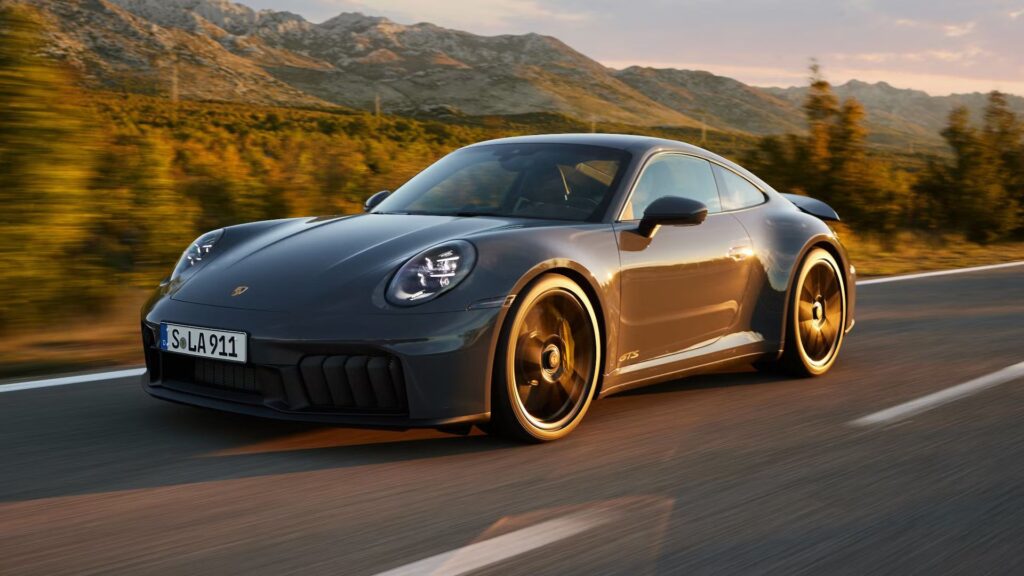
8. **Fuel Costs: The Premium for Performance**For all the talk of maintenance and repairs, one of the most consistent and often underestimated long-term costs of owning a Porsche 911 is simply keeping its tank full. While Porsche has engineered these cars to be relatively fuel-efficient for their performance capabilities, and they can travel impressive distances on a single tank, they unequivocally demand premium-grade gasoline. This isn’t just a recommendation; it’s a requirement to ensure the engine performs as intended and to avoid potential issues.
CarEdge and Edmunds, in their detailed analyses, offer differing estimates for fuel costs over a five-year period, ranging from $10,780 to a more substantial $20,269. These figures are based on mixed city/highway use and an average of 12,000 to 15,000 miles driven annually. This wide discrepancy highlights the highly personal nature of fuel expenditure. Your driving habits, the specific variant of 911 you own, and its intended use will all significantly influence your actual fuel bill.
Consider, for example, the enthusiastic owner who frequently takes their 911 to the racetrack. Track driving inherently demands a far more aggressive throttle input, leading to a drastically accelerated rate of fuel consumption compared to daily commuting. Such high-performance usage also often necessitates an accelerated maintenance and repair schedule, further compounding the overall running costs. Therefore, while Porsche hasn’t committed to converting the 911 into an EV, the ongoing need for premium fuel remains a substantial and continuous financial consideration.
Car Model Information: 2025 Porsche 911 Carrera
Name: Porsche 911
Caption: The 1 millionth 911 produced on display at Volkswagen Group Forum, Berlin
Designer: Ferdinand Alexander Porsche
Manufacturer: Porsche
Production: September 1964 – present
Assembly: Stuttgart,Baden-Württemberg
Class: Sports car
BodyStyle: unbulleted list
Related: unbulleted list
Layout: Rear-engine design,rear-wheel drive
Predecessor: Porsche 356
Categories: 1970s cars, 1980s cars, 1990s cars, 2+2 coupés, 2000s cars
Summary: The Porsche 911 model series (pronounced Nine Eleven or in German: Neunhundertelf, or colloquially Neunelfer) is a family of two-door, high performance rear-engine sports cars, introduced in September 1964 by Porsche of Stuttgart, Germany, and now in its eighth generation. All 911s have a rear-mounted flat-six engine, and usually 2+2 seating, except for special 2-seater variants. Originally, 911s had air-cooled engines, and torsion bar suspension, but the 911 has been continuously enhanced, and evolved across generations. Though the 911 core concept has remained largely unchanged, water-cooled engines were introduced with the 996 series in 1998, and front and rear suspension have been replaced by Porsche-specific MacPherson suspension up front, and independent multi-link rear suspension.
The 911 has been raced extensively by private and factory teams, in a variety of classes. It is among the most successful competition cars. In the mid-1970s, the naturally aspirated 911 Carrera RSR won world championship races including Targa Florio and the 24 Hours of Daytona. The 911-derived 935 turbo also won the 24 Hours of Le Mans in 1979. Porsche won the World Championship for Makes in 1976, 1977, 1978, and 1979 with 911-derived models.
In a 1999 poll to determine the Car of the Century, the 911 ranked fifth — one of two in the top five that had remained continuously in production (the original Beetle remained in production until 2003). The one millionth example was manufactured in May 2017 and is in the company’s permanent collection.
Get more information about: Porsche 911
Buying a high-performing used car >>>
Brand: Porsche Model: 911
Price: $158,691 Mileage: 5,931 mi.
Read more about: 9 Essential Lessons from Celebrity Scandals: Navigating Fame and Public Perception
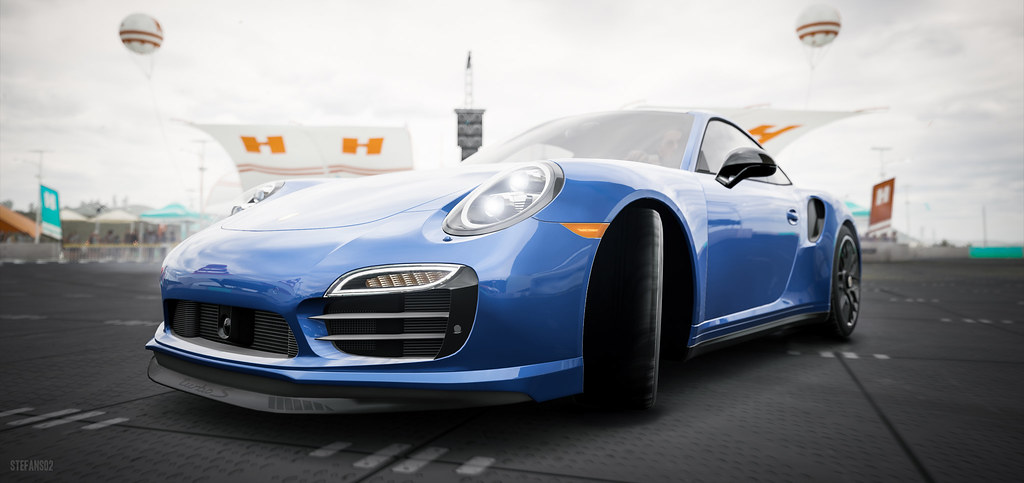
9. **The Allure of Personalization & Modification**Unlike the standardized costs of maintenance or insurance, the realm of personalization and modification introduces a discretionary, yet highly influential, financial layer for many Porsche 911 owners. For a significant portion of enthusiasts, owning a 911 is not merely about driving a factory-spec vehicle; it’s about imprinting a personal touch or enhancing its capabilities for specific purposes. This drive to individualize is a compulsory part of the car ownership experience for many.
These modifications can range from purely cosmetic enhancements designed to express pride of ownership and individuality, such as installing paint protection film or a custom set of wheels, to more performance-oriented upgrades. For owners who intend to use their 911 as a track weapon, modifications might include upgrading tires, brakes, suspension, or even engine components to extract maximum performance on the circuit. The scope for personalization is vast, and so are the potential costs.
Depending on an owner’s goals and budget, these personal touches can add anywhere from hundreds to tens of thousands of dollars to the overall cost of ownership. While such expenditures are typically excluded from standard ownership cost breakdowns and buyer’s guides, they are common enough within the enthusiast community to warrant a significant mention. It’s also wise for owners to familiarize themselves with how such modifications might affect their car’s warranty, a crucial consideration for any contemporary 911.
Car Model Information: 2025 Porsche 911 Carrera
Name: Porsche 911
Caption: The 1 millionth 911 produced on display at Volkswagen Group Forum, Berlin
Designer: Ferdinand Alexander Porsche
Manufacturer: Porsche
Production: September 1964 – present
Assembly: Stuttgart,Baden-Württemberg
Class: Sports car
BodyStyle: unbulleted list
Related: unbulleted list
Layout: Rear-engine design,rear-wheel drive
Predecessor: Porsche 356
Categories: 1970s cars, 1980s cars, 1990s cars, 2+2 coupés, 2000s cars
Summary: The Porsche 911 model series (pronounced Nine Eleven or in German: Neunhundertelf, or colloquially Neunelfer) is a family of two-door, high performance rear-engine sports cars, introduced in September 1964 by Porsche of Stuttgart, Germany, and now in its eighth generation. All 911s have a rear-mounted flat-six engine, and usually 2+2 seating, except for special 2-seater variants. Originally, 911s had air-cooled engines, and torsion bar suspension, but the 911 has been continuously enhanced, and evolved across generations. Though the 911 core concept has remained largely unchanged, water-cooled engines were introduced with the 996 series in 1998, and front and rear suspension have been replaced by Porsche-specific MacPherson suspension up front, and independent multi-link rear suspension.
The 911 has been raced extensively by private and factory teams, in a variety of classes. It is among the most successful competition cars. In the mid-1970s, the naturally aspirated 911 Carrera RSR won world championship races including Targa Florio and the 24 Hours of Daytona. The 911-derived 935 turbo also won the 24 Hours of Le Mans in 1979. Porsche won the World Championship for Makes in 1976, 1977, 1978, and 1979 with 911-derived models.
In a 1999 poll to determine the Car of the Century, the 911 ranked fifth — one of two in the top five that had remained continuously in production (the original Beetle remained in production until 2003). The one millionth example was manufactured in May 2017 and is in the company’s permanent collection.
Get more information about: Porsche 911
Buying a high-performing used car >>>
Brand: Porsche Model: 911
Price: $158,691 Mileage: 5,931 mi.
Read more about: Inside Vanilla Ice’s Garage: A Deep Dive into the Rapper’s Eclectic and Multi-Million Dollar Automotive Collection
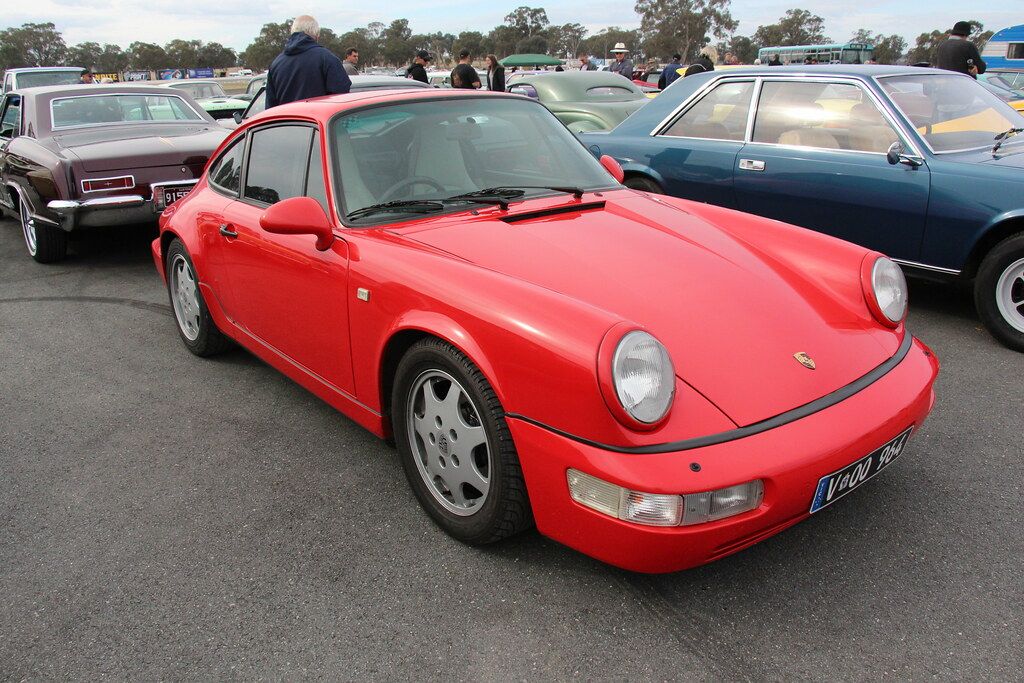
10. **Government Taxes: Beyond the Sticker Price**When calculating the total cost of acquiring a Porsche 911, it’s imperative not to overlook the often-substantial government taxes and fees that accompany the purchase and ongoing ownership. These are not ‘hidden’ in the traditional sense, but they are additional sums that can significantly inflate the total outlay, particularly for a high-value vehicle like the 911. Two primary taxes stand out: sales tax and the ‘Gas Guzzler’ tax.
Sales tax is a ubiquitous component of nearly every car purchase, with rates varying significantly by state, ranging from 0% to as high as 8.25% of the car’s value. With a national average of 4.99%, applying this to the MSRP of a new 2025 Porsche 911 Carrera, which starts at $122,095, could mean a maximum sales tax of over $10,000 in certain states. This upfront cost represents a substantial addition to the initial purchase price, requiring careful budgeting.
Furthermore, many Porsche 911 models are subject to the federal ‘Gas Guzzler’ tax, a levy imposed on vehicles that fail to meet specific fuel economy standards. According to owners on Rennlist, this tax typically ranges between $1,300 and $1,700. Interestingly, discussions among 911 owners suggest that models equipped with a manual transmission often incur a significantly higher Gas Guzzler tax compared to their PDK-equipped counterparts, with $1,700 often being the starting point for manual variants. These taxes, while statutory, add a noteworthy financial burden to the dream of 911 ownership.
Car Model Information: 2025 Porsche 911 Carrera
Name: Porsche 911
Caption: The 1 millionth 911 produced on display at Volkswagen Group Forum, Berlin
Designer: Ferdinand Alexander Porsche
Manufacturer: Porsche
Production: September 1964 – present
Assembly: Stuttgart,Baden-Württemberg
Class: Sports car
BodyStyle: unbulleted list
Related: unbulleted list
Layout: Rear-engine design,rear-wheel drive
Predecessor: Porsche 356
Categories: 1970s cars, 1980s cars, 1990s cars, 2+2 coupés, 2000s cars
Summary: The Porsche 911 model series (pronounced Nine Eleven or in German: Neunhundertelf, or colloquially Neunelfer) is a family of two-door, high performance rear-engine sports cars, introduced in September 1964 by Porsche of Stuttgart, Germany, and now in its eighth generation. All 911s have a rear-mounted flat-six engine, and usually 2+2 seating, except for special 2-seater variants. Originally, 911s had air-cooled engines, and torsion bar suspension, but the 911 has been continuously enhanced, and evolved across generations. Though the 911 core concept has remained largely unchanged, water-cooled engines were introduced with the 996 series in 1998, and front and rear suspension have been replaced by Porsche-specific MacPherson suspension up front, and independent multi-link rear suspension.
The 911 has been raced extensively by private and factory teams, in a variety of classes. It is among the most successful competition cars. In the mid-1970s, the naturally aspirated 911 Carrera RSR won world championship races including Targa Florio and the 24 Hours of Daytona. The 911-derived 935 turbo also won the 24 Hours of Le Mans in 1979. Porsche won the World Championship for Makes in 1976, 1977, 1978, and 1979 with 911-derived models.
In a 1999 poll to determine the Car of the Century, the 911 ranked fifth — one of two in the top five that had remained continuously in production (the original Beetle remained in production until 2003). The one millionth example was manufactured in May 2017 and is in the company’s permanent collection.
Get more information about: Porsche 911
Buying a high-performing used car >>>
Brand: Porsche Model: 911
Price: $158,691 Mileage: 5,931 mi.
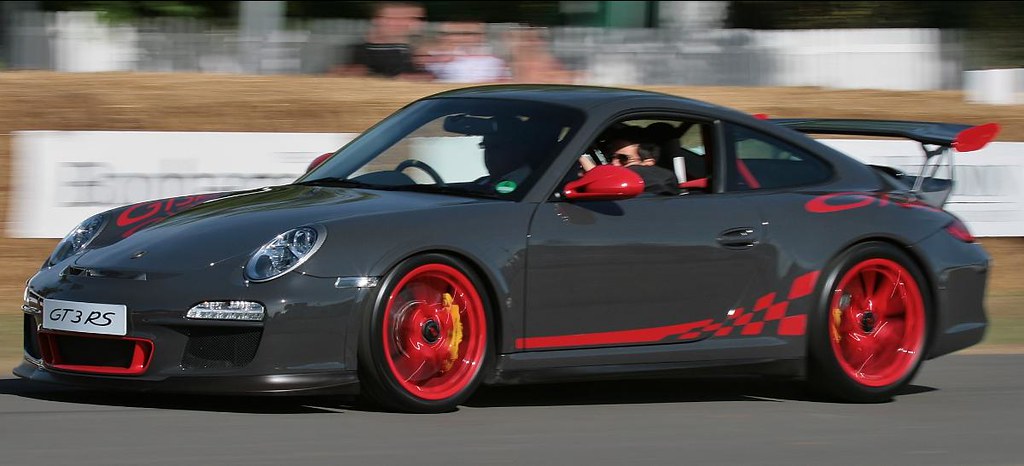
11. **The Three Cs of Smart Buying: Condition, Color, Kilometers**For anyone embarking on the journey to acquire a classic Porsche 911, the advice from seasoned experts like Ron Widdison, editor of the Porsche Car Club magazine in Victoria and owner of ten Porsches, is invaluable. Ron’s pragmatic framework, which he dubs the “Three Cs” (with an admitted semantic stretch for one of them), cuts through the emotional allure to provide practical guidance for making a sound investment. His strategy prioritizes logic alongside passion.
The first ‘C’ stands for **Condition**, and Ron is adamant that bodywork is where the biggest financial traps often lie. He stresses that “General condition is important. Bodywork can sometimes be more expensive to fix than mechanical. The bodywork has to be spot on.” Red flags like rust, mismatched panels, or bubbling paint signal potentially astronomical repair costs. A car with mechanical issues can often be remedied more affordably than one suffering from hidden structural damage, underscoring the need for meticulous inspection of the car’s exterior and frame.
Next is **Color**, a factor Ron highlights as crucial for resale value, even if it seems superficial. “If you buy a green car, you’re really limiting the market when you sell it,” he explains. While you might adore a unique shade, its niche appeal can significantly restrict your pool of potential buyers later on. For broad appeal and strong value retention, Ron advises sticking to timeless hues such as silver, black, or Guards Red, unless you are committed to long-term ownership.
Finally, **Kilometers** (or mileage) is the third critical ‘C.’ Generally, lower mileage translates directly to higher value. Ron states, “If you can buy a car with less than 100,000km on it, it will be worth a lot more than a higher mileage example.” However, he cautions against being solely swayed by the odometer. A comprehensive service history and evidence of regular, proper use are equally vital indicators of a car’s overall health and the care it has received over its lifetime.
Beyond these ‘Three Cs,’ Ron also emphasizes the importance of body style and transmission choice. Coupes consistently command higher desirability than Convertibles or Targas, and manual transmissions invariably fetch a premium over Tiptronic automatics. Above all, he urges prospective buyers to perform rigorous due diligence: “Take it to a specialist and have the mechanicals checked. Make sure there’s no rust, and that it’s been well maintained. You must do your due diligence and check them out properly.” This expert advice underscores the necessity of buying with your head first, and allowing your heart to follow.
Car Model Information: 2025 Porsche 911 Carrera
Name: Porsche 911
Caption: The 1 millionth 911 produced on display at Volkswagen Group Forum, Berlin
Designer: Ferdinand Alexander Porsche
Manufacturer: Porsche
Production: September 1964 – present
Assembly: Stuttgart,Baden-Württemberg
Class: Sports car
BodyStyle: unbulleted list
Related: unbulleted list
Layout: Rear-engine design,rear-wheel drive
Predecessor: Porsche 356
Categories: 1970s cars, 1980s cars, 1990s cars, 2+2 coupés, 2000s cars
Summary: The Porsche 911 model series (pronounced Nine Eleven or in German: Neunhundertelf, or colloquially Neunelfer) is a family of two-door, high performance rear-engine sports cars, introduced in September 1964 by Porsche of Stuttgart, Germany, and now in its eighth generation. All 911s have a rear-mounted flat-six engine, and usually 2+2 seating, except for special 2-seater variants. Originally, 911s had air-cooled engines, and torsion bar suspension, but the 911 has been continuously enhanced, and evolved across generations. Though the 911 core concept has remained largely unchanged, water-cooled engines were introduced with the 996 series in 1998, and front and rear suspension have been replaced by Porsche-specific MacPherson suspension up front, and independent multi-link rear suspension.
The 911 has been raced extensively by private and factory teams, in a variety of classes. It is among the most successful competition cars. In the mid-1970s, the naturally aspirated 911 Carrera RSR won world championship races including Targa Florio and the 24 Hours of Daytona. The 911-derived 935 turbo also won the 24 Hours of Le Mans in 1979. Porsche won the World Championship for Makes in 1976, 1977, 1978, and 1979 with 911-derived models.
In a 1999 poll to determine the Car of the Century, the 911 ranked fifth — one of two in the top five that had remained continuously in production (the original Beetle remained in production until 2003). The one millionth example was manufactured in May 2017 and is in the company’s permanent collection.
Get more information about: Porsche 911
Buying a high-performing used car >>>
Brand: Porsche Model: 911
Price: $158,691 Mileage: 5,931 mi.
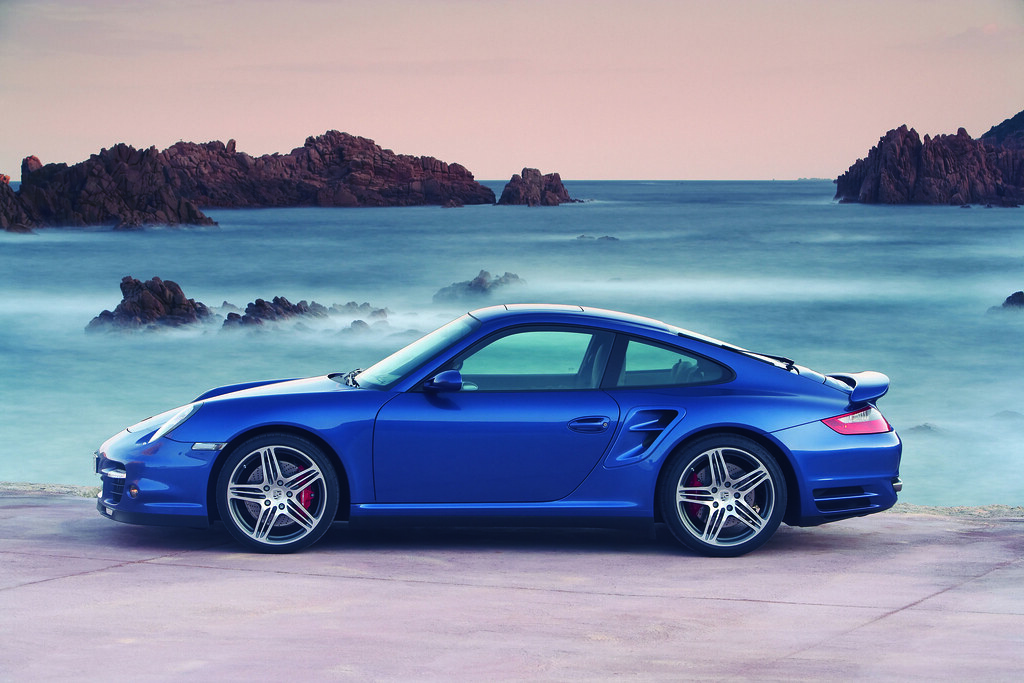
12. **Navigating the Generations: The Early Classics (Type 901 & 964)**For anyone serious about owning a Porsche 911, understanding its generational evolution is paramount to making a wise purchase. The journey began with the **Type 901 (1963-89)**, widely known as the ‘classic’ 911. Early models from 1963-73, often called “long-hood” cars, are highly sought after by collectors for their elegant metal bumpers, svelte lines, and minimalist cabins, representing the purest expression of the 911 philosophy. These lightweight, agile machines offered a raw, involving, and sometimes challenging driving experience due to their rear-engine layout.
For anyone serious about owning a Porsche 911, understanding its generational evolution is paramount to making a wise purchase. The journey began with the **Type 901 (1963-89)**, widely known as the ‘classic’ 911. Early models from 1963-73, often called “long-hood” cars, are highly sought after by collectors for their elegant metal bumpers, svelte lines, and minimalist cabins, representing the purest expression of the 911 philosophy. These lightweight, agile machines offered a raw, involving, and sometimes challenging driving experience due to their rear-engine layout.
The 901 saw significant changes in 1974 with the introduction of “impact bumpers” to meet US crash regulations, creating the G-series that ran until 1989. While aesthetically controversial to purists, these models improved mechanically and were produced in larger numbers, making them more accessible today. A true game-changer arrived in 1975 with the 911 Turbo (930), featuring flared arches, a whale tail, and turbocharged power that redefined 911 performance, earning it a reputation as both an icon and a challenging drive. For enthusiasts, the initial 901 models with metal bumpers are the quintessential 911, while the 930 Turbo embodies brutal performance.
The **Type 964 (1989-94)** marked the first major overhaul of the 911. Though visually similar to its predecessor, it was mechanically distinct, featuring a modernized chassis with coil springs instead of torsion bars, along with the introduction of ABS and power steering—luxuries previously absent. It also debuted the electronically deployed rear spoiler and was the first 911 to offer all-wheel drive in the Carrera 4, adding a new dimension of security and capability.
The 964 visually presented plastic bumpers more cleanly integrated into the bodywork, retaining the iconic round headlights that are a hallmark of the 911. This generation is praised for striking an ideal balance between vintage charm and modern usability, making it a favorite for those seeking the soul of an air-cooled Porsche without the daily compromises of older models. Its robust and versatile chassis is even the preferred foundation for Singer Vehicle Design’s revered reimagined 911s, highlighting its inherent quality and making it an excellent starting point for buyers seeking vintage flavor with real-world drivability.
Car Model Information: 2025 Porsche 911 Carrera
Name: Porsche 911
Caption: The 1 millionth 911 produced on display at Volkswagen Group Forum, Berlin
Designer: Ferdinand Alexander Porsche
Manufacturer: Porsche
Production: September 1964 – present
Assembly: Stuttgart,Baden-Württemberg
Class: Sports car
BodyStyle: unbulleted list
Related: unbulleted list
Layout: Rear-engine design,rear-wheel drive
Predecessor: Porsche 356
Categories: 1970s cars, 1980s cars, 1990s cars, 2+2 coupés, 2000s cars
Summary: The Porsche 911 model series (pronounced Nine Eleven or in German: Neunhundertelf, or colloquially Neunelfer) is a family of two-door, high performance rear-engine sports cars, introduced in September 1964 by Porsche of Stuttgart, Germany, and now in its eighth generation. All 911s have a rear-mounted flat-six engine, and usually 2+2 seating, except for special 2-seater variants. Originally, 911s had air-cooled engines, and torsion bar suspension, but the 911 has been continuously enhanced, and evolved across generations. Though the 911 core concept has remained largely unchanged, water-cooled engines were introduced with the 996 series in 1998, and front and rear suspension have been replaced by Porsche-specific MacPherson suspension up front, and independent multi-link rear suspension.
The 911 has been raced extensively by private and factory teams, in a variety of classes. It is among the most successful competition cars. In the mid-1970s, the naturally aspirated 911 Carrera RSR won world championship races including Targa Florio and the 24 Hours of Daytona. The 911-derived 935 turbo also won the 24 Hours of Le Mans in 1979. Porsche won the World Championship for Makes in 1976, 1977, 1978, and 1979 with 911-derived models.
In a 1999 poll to determine the Car of the Century, the 911 ranked fifth — one of two in the top five that had remained continuously in production (the original Beetle remained in production until 2003). The one millionth example was manufactured in May 2017 and is in the company’s permanent collection.
Get more information about: Porsche 911
Buying a high-performing used car >>>
Brand: Porsche Model: 911
Price: $158,691 Mileage: 5,931 mi.
Read more about: Unearthing Automotive Gold: A Forbes Guide to Classic Cars Becoming Savvy Investments
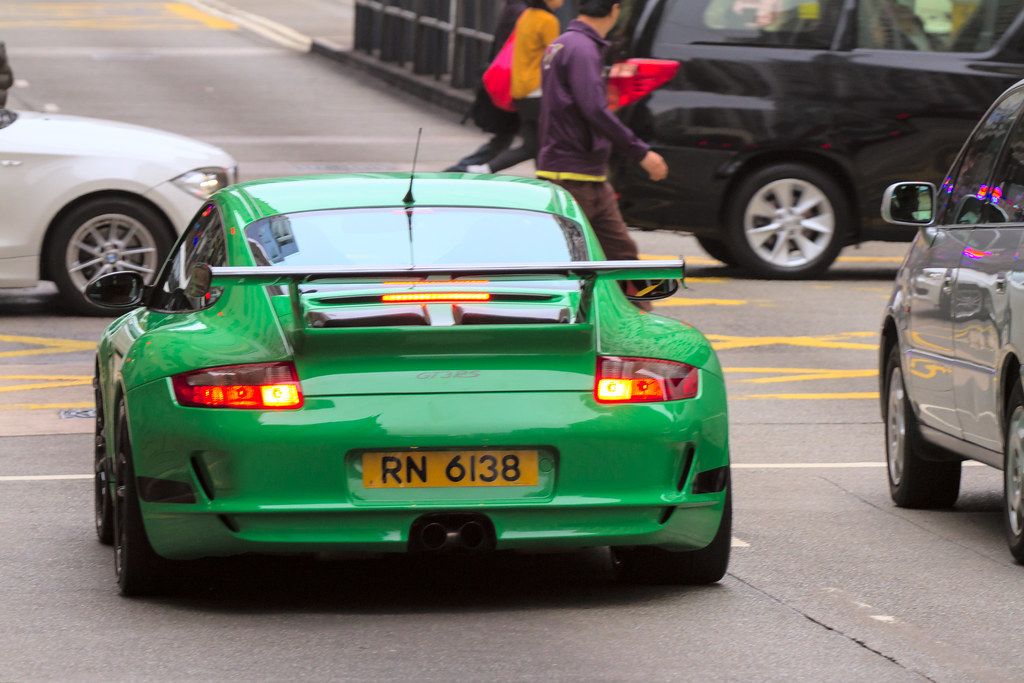
13. **Navigating the Generations: The Transitional Years (Type 993, 996 & 997)**Following the significant overhaul of the 964, the **Type 993 (1995-98)** is widely considered Porsche’s triumphant return to full form and, crucially, the final chapter in the air-cooled era. For many purists, this generation represents the last “real” 911. It brought smoother bodywork, enhanced build quality, and a pivotal mechanical upgrade: a new multilink rear suspension setup that finally addressed and tamed the notorious tail-happy nature of earlier models. The 993 retained the classic 911 look and sound but delivered a newfound composure and confidence in its drive.
This blend of traditional appeal and improved handling makes the 993 an ideal entry point for a first-time classic 911 buyer. It’s renowned for its usability, reliability, and stunning aesthetics, without presenting the challenging driving characteristics of its predecessors in tricky conditions. The 993 Turbo, introduced in 1995, was another landmark, becoming the first 911 with twin-turbochargers and standard all-wheel drive. Its hypercar-level acceleration (0-100 km/h in 3.4 seconds) was phenomenal for its time and remains impressive today, making it a highly sought-after, albeit expensive, piece of Porsche history. The 993 truly embodies peak Porsche nostalgia, offering old-school charm with just enough modern engineering to inspire confidence.
The **Type 996 (1999-2004)** marked the most radical departure in 911 history, ushering in the controversial, but necessary, shift from the beloved air-cooled flat-six to a thoroughly modern water-cooled engine. This generation featured a larger, wider body and a completely re-engineered platform, signaling Porsche’s commitment to evolving for survival into the new millennium. Beyond the engine, the 996 stirred controversy with its distinctive teardrop headlights, often derisively nicknamed “fried eggs,” which many felt too closely resembled the cheaper Boxster model.
Despite the initial backlash, a mid-cycle facelift in 2002 rectified the headlight issue with a more traditional front end, making these later models generally more desirable. The 996’s controversial standing has paradoxically kept its prices lower than other generations, making it a relative bargain in the classic 911 market. Buyers get a genuine 911 experience—fast, agile, comfortable, and precisely engineered—without the inflated price tag. A highlight of this era was the 996 GT3, a stripped-back, track-focused machine that established the blueprint for all subsequent GT3 models, offering a raw, naturally aspirated driving experience.
The **Type 997 (2004-12)** served as a crucial course correction after the polarizing 996, bringing the 911 back to what many considered “proper” territory. The iconic round headlights made a welcome return, the interior received a significant upgrade in quality and design, and the overall car presented a more refined and polished package. While it retained the water-cooled flat-six, every aspect of the vehicle was meticulously refined. This generation is often categorized into two phases: the early models (2004–2008) maintained a more traditional mechanical setup, while the facelifted 997.2 models (2009–2012) introduced vital technical advancements that modernized the driving experience.
The most notable upgrades in the 997.2 included the adoption of direct-injection engines, boosting both performance and fuel efficiency, and the introduction of Porsche’s revolutionary PDK dual-clutch gearbox, which delivered lightning-fast and incredibly smooth gear changes. Additional tech features like Bluetooth, revised suspension, and improved aerodynamics enhanced both daily usability and on-track capability. The 997 is widely regarded as a ‘sweet spot,’ offering an engaging, analogue feel combined with modern performance and amenities. Consequently, prices for good examples are on the rise, urging prospective buyers to act promptly to secure a piece of this balanced and highly desirable generation.
Car Model Information: 2025 Porsche 911 Carrera
Name: Porsche 911
Caption: The 1 millionth 911 produced on display at Volkswagen Group Forum, Berlin
Designer: Ferdinand Alexander Porsche
Manufacturer: Porsche
Production: September 1964 – present
Assembly: Stuttgart,Baden-Württemberg
Class: Sports car
BodyStyle: unbulleted list
Related: unbulleted list
Layout: Rear-engine design,rear-wheel drive
Predecessor: Porsche 356
Categories: 1970s cars, 1980s cars, 1990s cars, 2+2 coupés, 2000s cars
Summary: The Porsche 911 model series (pronounced Nine Eleven or in German: Neunhundertelf, or colloquially Neunelfer) is a family of two-door, high performance rear-engine sports cars, introduced in September 1964 by Porsche of Stuttgart, Germany, and now in its eighth generation. All 911s have a rear-mounted flat-six engine, and usually 2+2 seating, except for special 2-seater variants. Originally, 911s had air-cooled engines, and torsion bar suspension, but the 911 has been continuously enhanced, and evolved across generations. Though the 911 core concept has remained largely unchanged, water-cooled engines were introduced with the 996 series in 1998, and front and rear suspension have been replaced by Porsche-specific MacPherson suspension up front, and independent multi-link rear suspension.
The 911 has been raced extensively by private and factory teams, in a variety of classes. It is among the most successful competition cars. In the mid-1970s, the naturally aspirated 911 Carrera RSR won world championship races including Targa Florio and the 24 Hours of Daytona. The 911-derived 935 turbo also won the 24 Hours of Le Mans in 1979. Porsche won the World Championship for Makes in 1976, 1977, 1978, and 1979 with 911-derived models.
In a 1999 poll to determine the Car of the Century, the 911 ranked fifth — one of two in the top five that had remained continuously in production (the original Beetle remained in production until 2003). The one millionth example was manufactured in May 2017 and is in the company’s permanent collection.
Get more information about: Porsche 911
Buying a high-performing used car >>>
Brand: Porsche Model: 911
Price: $158,691 Mileage: 5,931 mi.
Read more about: Rare Cars of the 1980s: Icons of Performance Innovation and Style
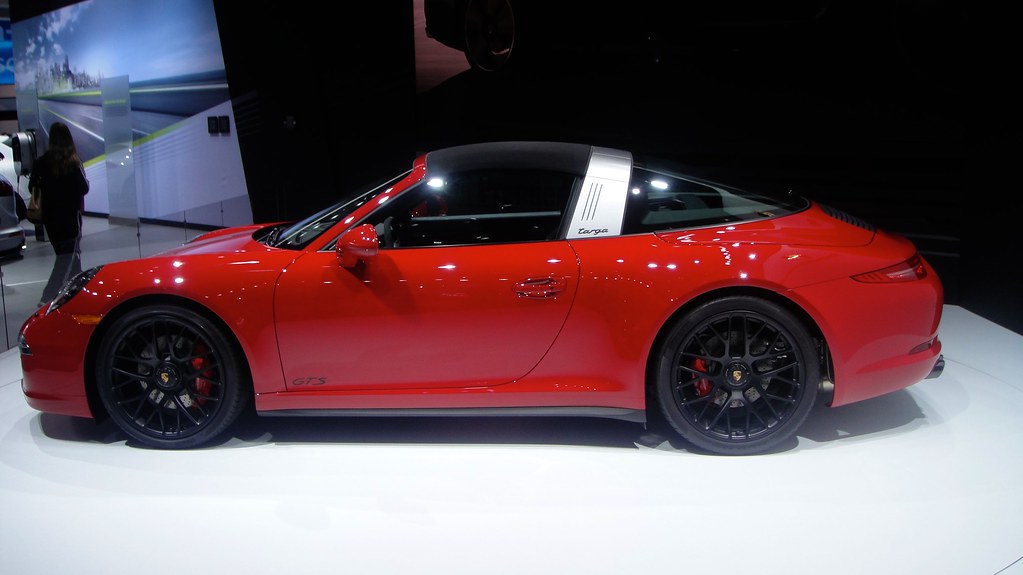
14. **Navigating the Generations: Modernity and the Future (Type 991 & 992)**The **Type 991 (2012-2019)** represented one of the most significant structural overhauls in the 911’s history. It introduced an entirely new platform that extended the car’s dimensions, yet ingeniously managed to shed weight through extensive use of aluminum, leading to improvements in both handling dynamics and fuel efficiency. Visually, the 991 retained the quintessential 911 proportions but presented a sharper, more contemporary aesthetic. Inside, the cabin saw a substantial leap in luxury, adopting a Panamera-inspired layout, featuring higher-quality materials, and integrating more advanced technological features.
A point of contention for purists was the introduction of electric power steering, which, while more efficient, initially dulled some of the 911’s famed road feel. However, Porsche engineers dedicated significant effort to refining its tune, and most drivers eventually adapted. The manual gearbox evolved to seven speeds—an unconventional choice that aided highway fuel economy—while the PDK dual-clutch transmission became even more refined and efficient, converting many manual loyalists. A major shift occurred in 2015 with the 991.2 update, where all Carreras received smaller 3.0-litre twin-turbo engines. Though some mourned the loss of the naturally aspirated flat-six howl, the undeniable performance gains and improved emissions underscored Porsche’s commitment to modern engineering. The 991 effectively bridges the gap between classic engagement and contemporary capability.
The current **Type 992 (2019-present)** generation stands as the most technologically advanced 911 to date, yet it remarkably stays true to its iconic roots. Aesthetically, it draws more heavily from the past than the 991, featuring wider hips, a flatter bonnet, and a distinctive rear light bar reminiscent of the G-Series models. Despite its larger overall footprint, the 992 manages to project a tighter, more athletic stance. Mechanically, nearly every component has been refined. It boasts a more rigid and better-balanced platform, partly due to its aluminum body panels and wider track.
A key enhancement across the range is the standardization of staggered wheel sizes—wider at the rear—which significantly improves cornering grip and stability. Porsche engineers also implemented a new engine mounting system, an upgraded intercooler design, and revised intake architecture, all aimed at ensuring the turbocharged flat-six remains as responsive and characterful as ever. The cabin features a partially digital instrument cluster (with the central tachometer remaining analogue) and a state-of-the-art infotainment system. While every 911 generation marks a technical milestone, the 992’s most significant legacy will be defined by its imminent future: the introduction of hybrid power. The forthcoming 992.2 models, rolling out from 2024, will integrate electrification, providing a new dimension of boost while steadfastly adhering to the 911’s unwavering performance-first ethos, marking an exciting new chapter for the enduring legend.
Car Model Information: 2023 Dodge Charger GT
Caption: Porsche 911 (992)
Name: Porsche 911 GT3
Manufacturer: Porsche
Production: 1999–present
Assembly: Zuffenhausen
BodyStyle: coupé
Layout: Rear-engine, rear-wheel-drive layout
Class: Sports car
Predecessor: Porsche 993#Carrera RS
Related: Porsche 911 GT2
Categories: 2000s cars, 2010s cars, 2020s cars, All articles containing potentially dated statements, All articles with dead external links
Summary: The Porsche 911 GT3 is a high-performance homologation model of the Porsche 911 sports car. It is a range of high-performance models, which began with the 1973 911 Carrera RS. The GT3 has had a successful racing career in the one-make national and regional Porsche Carrera Cup and GT3 Cup Challenge series, as well as the international Porsche Supercup supporting the FIA F1 World Championship.
Get more information about: Porsche 911 GT3
Buying a high-performing used car >>>
Brand: Porsche Model: 911 Type 991
Price: $26,690 Mileage: 19,257 mi.
Owning a Porsche 911 is, without a doubt, a journey filled with unparalleled driving pleasure, iconic style, and a deep connection to automotive history. But as this in-depth look reveals, it’s also a journey paved with a multitude of financial realities, both obvious and subtly ‘hidden.’ From the immediate shock of unexpected repairs and the ongoing costs of specialized labor and insurance, to the long-term commitments of fuel, customization, and government taxes, the financial landscape is as dynamic and nuanced as the car itself. By approaching this dream with thorough due diligence, armed with expert advice on generational specifics and smart buying strategies, prospective and current owners can navigate these costs confidently. Ultimately, understanding these expenditures isn’t just about preparing your wallet; it’s about fully embracing the enduring legacy of the Porsche 911, ensuring that this diamond in the rough continues to shine for years to come.


